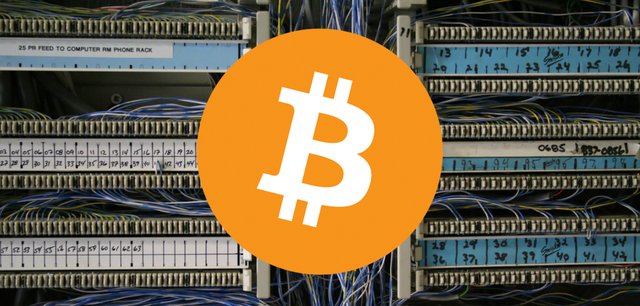
The Internet is a codependent system of networks which expose selections of information to each other for a variety of reasons (most often for commercial purposes). Each subnetwork ecosystem, while revealing information to other networks, still retains a degree of autonomy.
Though each networks has independent value it may potentially be evaluated potentially greater while interconnected because of the expressable value of the data or functionality to others. However, even adjacent networks that are solving similar problems coexist in the market for a time, though we are seeing both telecommunication and cable-providers butting up against existential threats to their long term existence.
Technological advances can look like a brand new product with a unique purpose or a suite of them that solves a collection of roadblocks together but also applies to existing hardware serving unpredicted solutions to problems it was not initially designed to fix.
Comparing the Development of Bitcoin to the Internet
Bitcoin is a new field which can be extremely difficult to jump into without at least some template to follow. Because the Bitcoin protocol operates as a collection of tools atop the existing Internet infrastructure, such as the Web overlays the Internet, comparing it to the telecom industry is the likely most fitting. Developments like TCP/IP were useful to other applications such as communication standards which allowed the Web to proliferate.
Further along the sequence of adoption, mobile devices or other solutions such as sensors are needed to bridge between the digital information layers and the physical world where we live and work.
Bitcoin seems more like a first-level protocol solution (like TCP/IP) - a platform or vehicle to standardize monetary language across the Internet. A second layer of application-specific solutions is only now beginning to be realized akin to those available for traditional currency issues such as POS (Lightning Network - which in ways at first glance resembles the User Datagram Protocol [UDP]) or long term secure storage (Casa HODL).
Presently many altcoins are examples of potential value in a startup sense. They can serve as experimental projects to solve problems that the Bitcoin protocol might select to incorporate in the future or else operate as smaller ecosystems (networks) with paid access via Bitcoin. There may not be a need for them to operate as currencies inherently though (there is similar potential for manipulation as can manifest in traditional finance).
Constructing the Bitcoin Onramp

Localized economies that are currently utilizing or expressed in Bitcoin don’t require every downstream solution, nor does the entire Bitcoin economy require the capability to interface in the ways those subnetworks may (for example, consider a business network with proprietary software that is walled-off from users beyond the organization). Point being, boom and bust cycles are probably natural reflections of human nature. Insulating against them seems like rigging the game against small entities in favor of chosen operators.
Global adoption estimates float between 5-10% for the entire crypto-asset market. This is incredibly small, but the community of users is passionate. Like any technology that is revolutionary, Bitcoin and other tokens have a mythological aura at present. Imagine early conversations about electric light, airplanes or even recall how people spoke about the Web in the 1990’s, widespread understanding of the science is low but the backbone infrastructure necessary to produce them is essentially magic (even to this day).
It would be easy to dismiss Bitcoin as a risky asset with an unknown future but as this first cryptoasset approaches 10 years of activity, it becomes more challenging to wave away. Additionally, it would be easy to say, that with such low adoption numbers that no one is using it.
How many people were using electricity without power lines or sockets for bulbs? How many commercial flights were in the air before airports dotted the landscape?
Right now developers are actively solving problems for businesses and organizations to interface with Bitcoin as well as by creating altcoins that serve very particularly community needs. Some of this will work, much of it won’t, but the result will be a more robust set of tools that are available for everyone along the way.
Wrapping Up the Analogy
When comparing to the advancements in telephony that ultimately lead to the Internet, Bitcoin is still in the era when the Bell system was competing with telegraph services (traditional fiat currencies in our analogy). Drawing out the analogy further, the Web didn’t emerge until the Berners-Lee codified the standards of HTML. It took 10 years before it was ubiquitous in the US market and approximately another 10 before most people were walking around with the Web in their hands thanks to smartphones on the mobile cellular system. If Bitcoin is DARPA timeframe Internet, the emergence of the Lightning Network seems comparable to a BBS in the time when dial-up modems ruled.
While it is easy to look back retrospectively at technologies that have come to dominate or alter industries, speculating about the future of money formats seems tenuous. However, I would say that Bitcoin isn’t so much the emergence of a new currency platform so much as the application of new technology to sound money principles and the rejection of a technology known as fiat currency. That’s another discussion topic altogether though.
In the meantime, its going to be interesting to watch the Bitcoin protocol scale out into deeper alcoves of our global economy over the next decade in much the same way that the Web has democratized media, marketing and Internet-based entrepreneurship. As my comparison of Bitcoin to the Web as a second layer that emerged from the hardware infrastructure unified as the Internet comes to end, I think it’s important to mentioned that the Web may have been a first iteration of that stacked content before building out the transactional capability. Bitcoin unifies these ideas in the token, information and value are one. It may be better to compare its potential instead not to Tim Berners-Lee and the Web but instead a richer platform hypothesized by Ted Nelson that he called Xanadu.


